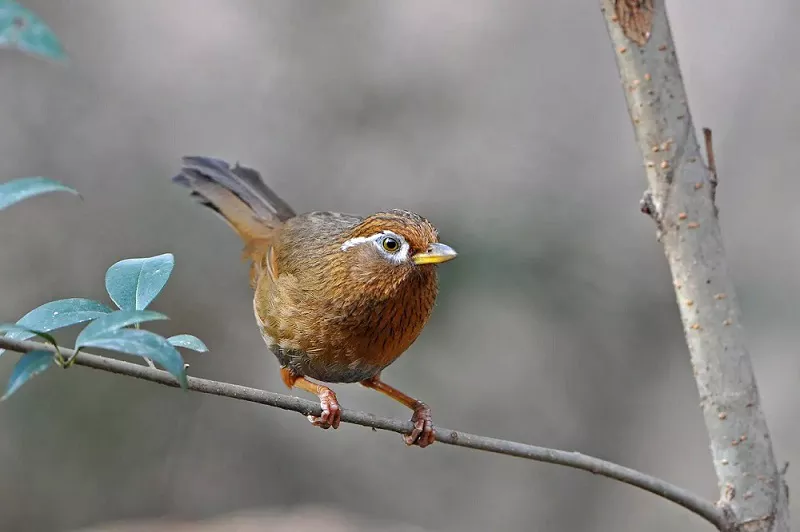Chinese huamei, also called Garrulax canorus, is a medium-sized bird in the class Aves and the family Huamei. Body length about 23 cm. The upper body is olive, the top of the head to the upper back is brown with black longitudinal stripes, the eye rims are white, and a narrow stripe is formed along the upper edge and extends back to the occipital side, forming a clear eyebrow, which is very eye-catching. The lower body is brownish yellow, with black vertical stripes from the throat to the upper chest, and the middle part of the abdomen is gray. The iris is orange-yellow or yellow, the upper mouth is orange, the lower mouth is olive-yellow, and the tarsus and toes are yellowish brown or light.
Chinese huamei habitat
It mainly inhabits in low mountains, hills and low bushes and shrubs in the plains at the foot of the mountains below 1500 meters above sea level. It also inhabits forest edges, farmland, wilderness, small bushes, bamboo forests and gardens near villages and towns.
Chinese huamei generally live in subtropical climates, relatively warm places with sufficient sunlight and rainfall. Most of these areas are criss-crossed by rivers, with many reservoirs and streams, rich in fresh water resources and relatively high humidity. Therefore, these areas have lush vegetation, and there are more insects, plant seeds and plant fruits, which are very suitable for the reproduction, growth, life and habitat of Chinese huamei.
As a resident bird in the place of origin, the Chinese huamei lives relatively fixedly in one area all year round, and generally does not migrate far. Its habitat is mainly bushes on hills and shrubs or shrubs near villages. It also lives in broad-leaved forests, mixed coniferous and broad-leaved forests, coniferous forests, bamboo forests, and bushes on the edge of fields above 1,000 meters above sea level. . Chinese huamei often moves alone in the wild, sometimes in small groups. Chinese huamei loves cleanliness and hygiene, and takes a bath almost every day throughout the year. Therefore, where there is no water and woods, there will be no Chinese huamei. The Chinese huamei is quick-witted, timid, and good at hiding. It often flies and walks in the dense forest, or stands in the dense treetops and twigs to sing.
Chinese huamei life habits
- Activity
Resident birds, living in mountain forest areas, often move alone or in pairs, and occasionally form small flocks. It is timid and quick-witted, and usually hides in dense bushes and weeds. It likes to fly and perch in the bushes, jumping and flying between the branches from time to time. If disturbed, immediately go down to the bushes, and then flee to other places along the ground. In case of emergency, it will take off directly, and the flight is fast, but it does not fly very far and then falls. The flight is not long-lasting, and generally it does not fly far. It often forages in the grass under the forest, and is not good at flying long distances.
- sound
They are good at singing, almost non-stop from morning to night, and their songs are melodious, especially in the breeding season, the male birds are especially good at singing, and their songs are more melodious, melodious and full of changes.
- feeding habits
Omnivorous, but the main food is insects throughout the year, especially in the breeding season, most of them are agricultural and forestry pests, including locusts, stink bugs, pine caterpillars, scarab beetles, larvae of Lepidoptera Tensia moth and larvae of other moths, etc. are its targets. Plant foods are mainly seeds, fruits, grass seeds, wild fruits, strawberries and so on. During the breeding season, the parent birds hunt large numbers of insects in order to feed their chicks. In the non-breeding season, after “beginning of autumn”, there are fewer insects, and they feed on various plant fruits, weed seeds or tender vegetables. In mountainous areas, before frost and snow come, Chinese huamei will collect the fruits and seeds and store them underground in caves or rocks as food for winter. In early spring, it also occasionally pecks the seedlings of bean crops and corn.
Chinese huamei distribution range
Mainly distributed in East Asia, Laos, northern Vietnam, southern China and coastal areas.


 Facebook
Facebook  Instagram
Instagram  Youtube
Youtube 